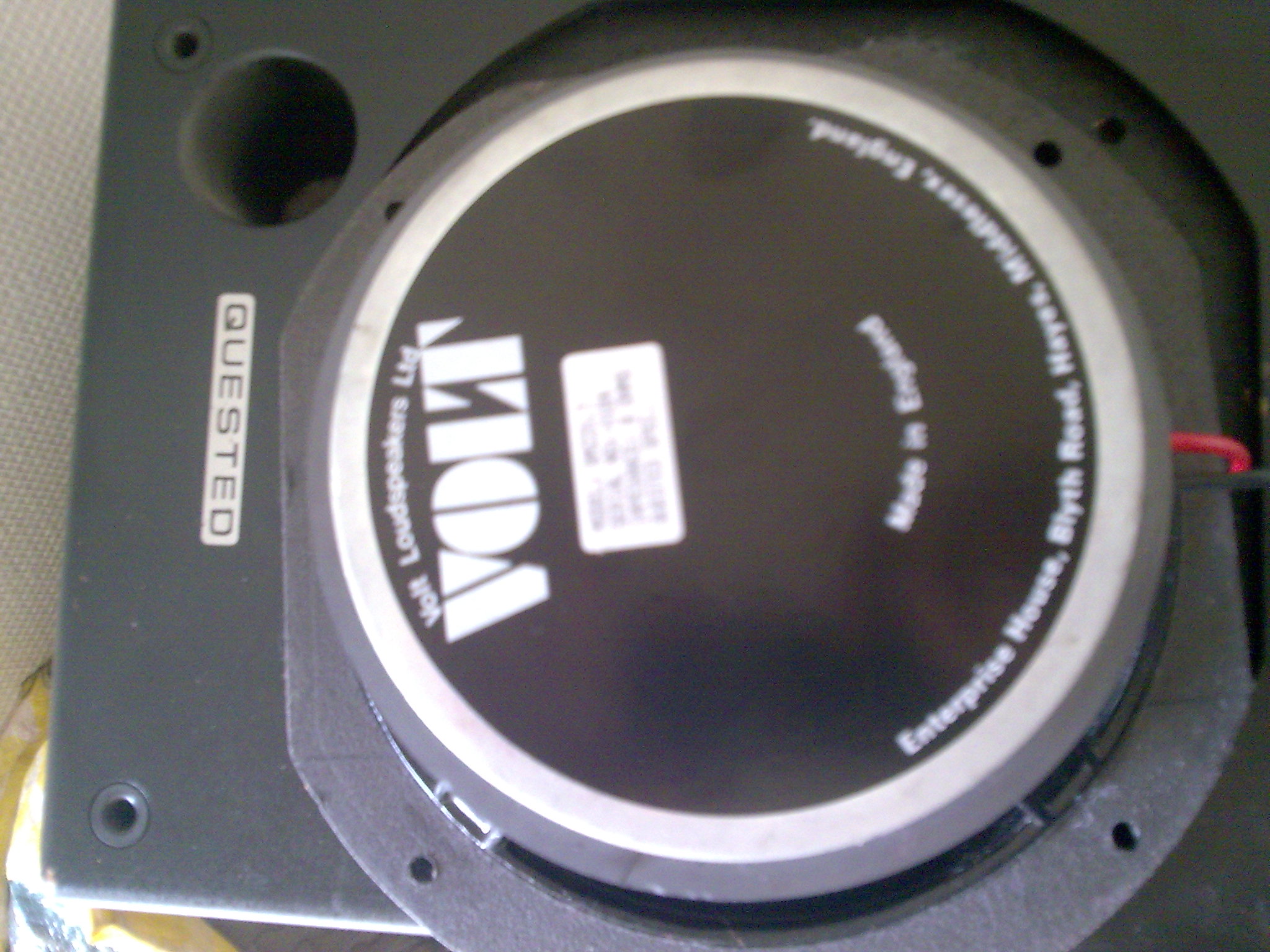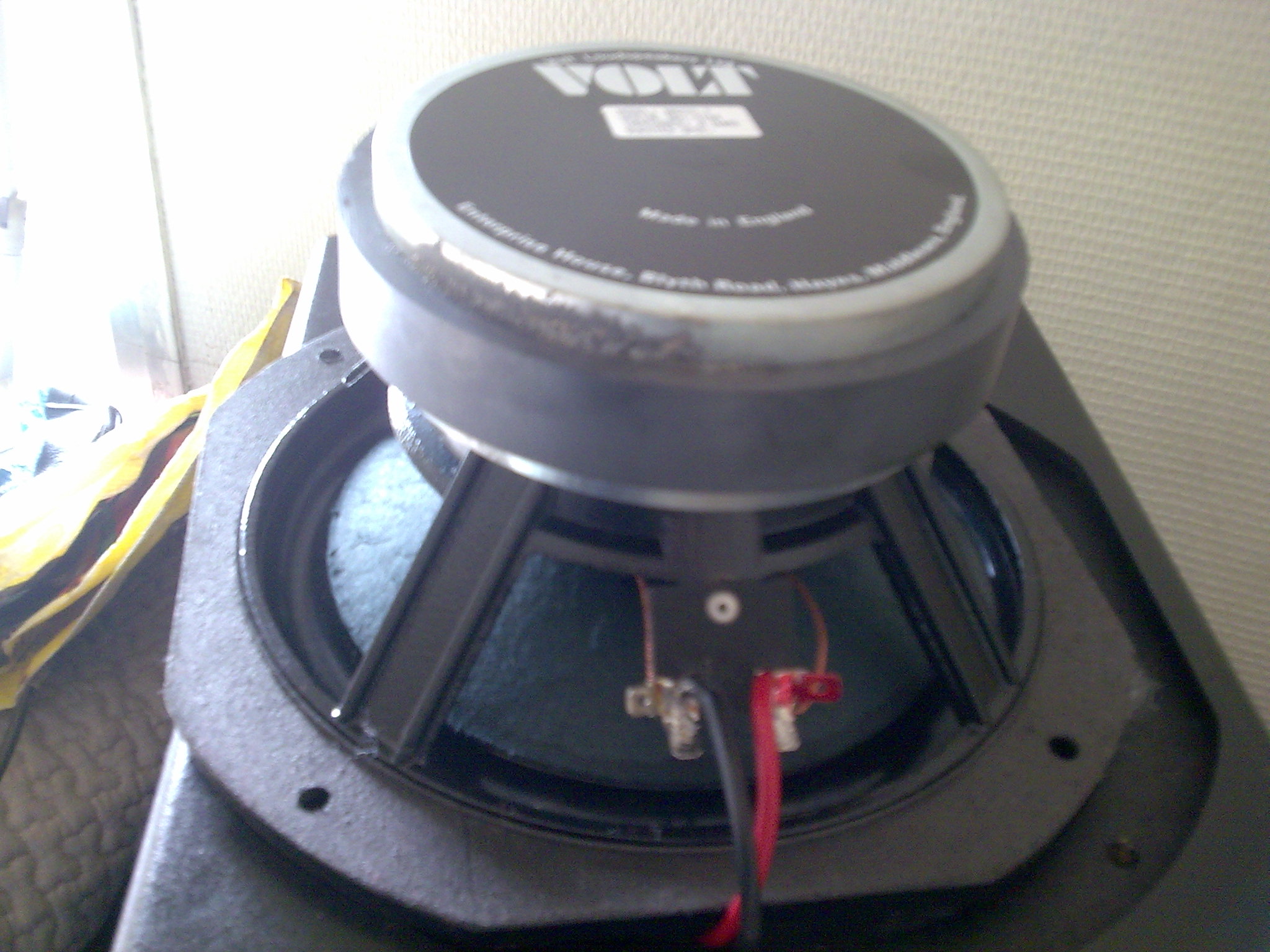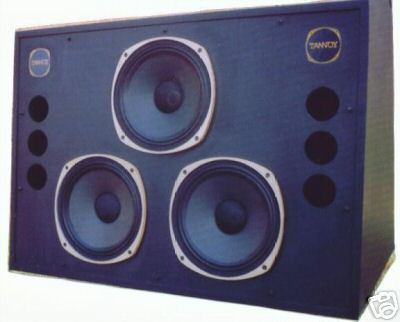With your cost analysis do not forget the amps!
ATC amps are not cheap by any stretch of the imagination, PMC use Bryston and Quested are using MC2 Audio for their bigger monitors. Quested also uses XTA crossovers/management.
All told Questeds top-of-the-range HM415 monitors have a list price of $68k, this includes over $22 000 in hardware (drivers, amps, crossover) not counting timber, fittings or labour.
ATC amps are not cheap by any stretch of the imagination, PMC use Bryston and Quested are using MC2 Audio for their bigger monitors. Quested also uses XTA crossovers/management.
All told Questeds top-of-the-range HM415 monitors have a list price of $68k, this includes over $22 000 in hardware (drivers, amps, crossover) not counting timber, fittings or labour.
Spot on for the tweeter.🙂
The woofer is from a british brand named Volt
that i didnt knew before getting thoses speakers.
Thank you Wahab!
It is good to have ones suspicions confirmed sometimes. ;-)
Volt make very, very good woofers indeed. In fact they are my favourite ones alongside short-coiled ATCs. Those two are like the Rolls-Royce and Bentley of woofer manufacturing.
With your cost analysis do not forget the amps!
ATC amps are not cheap by any stretch of the imagination, PMC use Bryston and Quested are using MC2 Audio for their bigger monitors. Quested also uses XTA crossovers/management.
All told Questeds top-of-the-range HM415 monitors have a list price of $68k, this includes over $22 000 in hardware (drivers, amps, crossover) not counting timber, fittings or labour.
I read about that in another topic (if i m not mistaking it was you 😀), as I said regardless the electronic parts , I was trying to clear it for my self , as a lot of people believe that designing an studio monitor is not just that and there s a secret behind it !
you mean he actually boost some frequencies to achieve the freq lose in small sealed box ... mm interesting . but doesn't that suffocate the drivers ?In the Barefoot both woofers are powered, Thomas uses electronic tricks to get the bass extension, possibly a Linkwitz transform or a variation on that theme. The woofers are internally bolted to each other to achieve force cancellation.
sorry if my questions seems silly , my english is ain't that good and i m (i hope) growing noob
Last edited:
Thank you for the infos , Charles , i knew Morel had good reputation
but knew nothing about Volt , although i can say that i rarely if ever heard
a 8" with so profound basses in such small cabinet.


but knew nothing about Volt , although i can say that i rarely if ever heard
a 8" with so profound basses in such small cabinet.


I do, and I agree. They are not “the best” loudspeakers available, perhaps especially for the “home” environment, but they provide an inexpensive (and portable) baseline reference for overall balance. One can argue all day about imagined improvements in “clarity” and “transparency”, and some speakers may well be marginally “better”, but at the end of that day any speaker that sounds, overall, significantly different from the B2030A is simply bad.I'd say you'll be very very hard-pressed to beat a pair of Behringer B2030A speakers. . . . IMHO, everyone should have a pair of these.
That’s not what actual measurement shows. When set for “flat” they are flat. What that exposes in many recordings may not be what you want to hear, but it is “what is”. They have, of course, all the same flaws that all small “box” loudspeakers have . . . there is no way around the failings of the form. If you want to avoid those failings you have to “get out of the box” entirely. But that’s often not appropriate, or even possible, in the “monitoring environment”. There (and everywhere, for that matter) your first attention must be on overall balance, and the Behringers do fine for that. Listening “through” them for “imaging” or “inner detail” is no more difficult than it is with any “box” monitor . . . if you can’t mix on the B2030A you can’t mix, period.I heard Behringer B2030A , they have a decent bass but they r far from flat)
If you want to hear the best overall presentation over a decently large listening area in a “normal” home environment, though (ie. farfield rather than nearfield listening), you can do better. And if your studio has a dedicated “reviewing” environment designed for just that purpose then it should be equipped with either a) really exemplary speakers or b) what you expect your intended audience to have. Or both . . .
That’s not what actual measurement shows. When set for “flat” they are flat. What that exposes in many recordings may not be what you want to hear, but it is “what is”. . . . if you can’t mix on the B2030A you can’t mix, period.
for the first part , i believe in some freqs it was hyped , i may be wrong , it was long ago and I don have access to test them again , and for the second part b2030a don produce the details you have to hear for your best mixing job , and i read it in reviews too, BUT as you learn how your speakers sound you will be able to do a very good job with them , and it s not like that you can not mix on them, you can mix on any decent speakers , for a long time I had to do some mixes on a cheap hifi sony headphone and they turned out acceptable , it s not about you be able to mix or not ,it s about to do the best you can and IMO you can not do the best you can on a entry level product .
Last edited:
The one measure missing with most drivers is their distortion.
Very few manufacturers publish distortion curves (thank you Beyma!) while with others we kind of know that they are low (like Volt) because people to whom low distortion is very important ie reputable monitor manufacturers repeatedly choose those drivers over others.
People can produce good mixes on all sorts of crappy speakers. Many use Yamaha NS10, others use Auratones. I can mix on the latter but not on the former. In the end you still have to check on good speakers anyway, I prefer to mix on good ones to start with.
Very few manufacturers publish distortion curves (thank you Beyma!) while with others we kind of know that they are low (like Volt) because people to whom low distortion is very important ie reputable monitor manufacturers repeatedly choose those drivers over others.
People can produce good mixes on all sorts of crappy speakers. Many use Yamaha NS10, others use Auratones. I can mix on the latter but not on the former. In the end you still have to check on good speakers anyway, I prefer to mix on good ones to start with.
Those Behringer B2030A have woofers with very little coil diameter ,
these are unlikely to have either the announced power rating neither
good linearity with a high dynamic range.
these are unlikely to have either the announced power rating neither
good linearity with a high dynamic range.
exactlyPeople can produce good mixes on all sorts of crappy speakers. Many use Yamaha NS10, others use Auratones. I can mix on the latter but not on the former. In the end you still have to check on good speakers anyway, I prefer to mix on good ones to start with.
I know they are topnotch products , but my point is any DIYer with a decent knowledge and abit of equipment can build something with same results with much less money .
Yes, but that goes for almost anything in the top segment. The advantages of sales volume diminish and performance increases will increase cost exponentially, as with any type of product. Besides, your own time and tools are free and so is your knowledge. Also you don't have to design for series manufacturing, assembly or maintenance. You don't need a supply chain. You don't need distributors. Etc. etc. This also applies to hi-fi speakers.
You can produce a speaker with a total materials and manufacturing cost of $1000 but you would probably need to sell it to a consumer for $5000 just to cover all additional expenses and pay everyone involved a salary. Siegfried Linkwitz also has a small page on his website about the cost of running a business: DIY and the Cost of Doing Business
Studio monitor
This is how a real monitor looks 😀
Cheers ,
Rens
This is how a real monitor looks 😀
An externally hosted image should be here but it was not working when we last tested it.
Cheers ,
Rens
I'll see your Buckingham Monitors and raise you a Dreadnought:

But they are still small compared to Quested HM415s!

But they are still small compared to Quested HM415s!
most important factors for me is to ofcourse be flat at all freqs without any hype or big lose (do its job as it suppose to ) , I mostly mix metal stuffs (specially death metal) so being able to handle low mid range without any hype or coloration in that range is so important for me and same goes for around 1k and 2k range where lots of harmonics and click sounds are , as for the spl i don't work with too vari dynamics due the nature of that genre of music but for sure more is better ... and for freq respond usually i roll off anything under 40 so I don need to worry to go below that, 40 is way to go for me or maybe 30hz to be sure wat s going on down there with bass , MTMs are so popular along people that mix metal and also the genelecs ...So Ahmad what do you require from a monitor especially in terms of bass extension and max SPL?
you r completely right , but I also believe that companies sometimes can build a better value for money products and what I see in most studio monitor products is opposite of that , lots of products are overpriced IMO, but nobody can deny the fact that there r some good value builts out there . and for some average guy like me with a limited budget i know i can do a better job building one than to spend same money on a product , because of the fact that as prices goes up the value for money will increase in most cases , cause you need to sell a 1000$ product for 5000$ to cover all the expenses , but for a 25000 $ product you gonna sell it 30000 $ or maybe 35000 ...Yes, but that goes for almost anything in the top segment. The advantages of sales volume diminish and performance increases will increase cost exponentially, as with any type of product. Besides, your own time and tools are free and so is your knowledge. Also you don't have to design for series manufacturing, assembly or maintenance. You don't need a supply chain. You don't need distributors. Etc. etc. This also applies to hi-fi speakers.
You can produce a speaker with a total materials and manufacturing cost of $1000 but you would probably need to sell it to a consumer for $5000 just to cover all additional expenses and pay everyone involved a salary. Siegfried Linkwitz also has a small page on his website about the cost of running a business: DIY and the Cost of Doing Business
I'll see your Buckingham Monitors and raise you a Dreadnought:

But they are still small compared to Quested HM415s!
those are coaxials , right ?
The top driver is a 15" DualConcentric, the other two are just woofers.
The Buckingham above uses a 10" DC and two 12" woofers.
Don't know about your budget Ahmad but given that you need 40Hz (or lower) and mixing metal which usually has a lot going on in the low mids I would tend to favour a 3way design.
The Buckingham above uses a 10" DC and two 12" woofers.
Don't know about your budget Ahmad but given that you need 40Hz (or lower) and mixing metal which usually has a lot going on in the low mids I would tend to favour a 3way design.
Last edited:
I have a long road ahead of me before i m able to design my own studio monitors ,if I wanna do it now I have to copy something , I m still in researching and learning phase , for now I always think of an MTM with a sub in same cab as barefoots but I m not decided yet as I have a long road ahead and we r on our way to move to another country and I m not gonna be able to start any project until we settled ... so I decided to spend this time on researches and discus the subject with you guys , for now i use a behringer headphone to mix my hobby stuffs !! , just to did something 😉
I'd say you'll be very very hard-pressed to beat a pair of Behringer B2030A speakers. £250/pr, and have plenty of adjustments built-in. They don't go especially loud, but manage to get impressively low bass out of a compact package. IMHO, everyone should have a pair of these.
hmmmm. i used to make music, and i have had those speakers. compard to my focals cms 50, the behringer had a veil in front of them. there was definitly details missing and overall, they sound ok.
Last edited:
I usually say that your mid (frequencies/driver) has to be very good (the best u can buy), for various members, in a 3 way or 2 way, the low/mid range in this case. Think about the human "voices" frequencies.
Then you can look at the DIY sites/forums like Troels and at classic speaker sites/museums of the vintage type to understand the history behind. Also if you don't have a measuring/mic apparatus you would be able to have the closest tech/lab address with measuring equipment, on the finished speakers, that can do the work for you for a +/-1 hour session of work. Sometimes another audio forum member helps you with that.
PRELUDE
DIY Loudspeakers
ARIA MHT
STUDIO 1
Trym
Idunn
Strassacker: Speaker Building, Components
http://www.diyaudio.com/forums/multi-way/147632-classic-monitor-designs-7.html
JBL 4429 latest 3 way studio monitor speakers - Kenrick Sound - YouTube
Pi Speakers - Product Review
Google: Altec 604, UREI 811 and 813, Western Electric 757-A Monitor.
Then you can look at the DIY sites/forums like Troels and at classic speaker sites/museums of the vintage type to understand the history behind. Also if you don't have a measuring/mic apparatus you would be able to have the closest tech/lab address with measuring equipment, on the finished speakers, that can do the work for you for a +/-1 hour session of work. Sometimes another audio forum member helps you with that.
PRELUDE
DIY Loudspeakers
ARIA MHT
STUDIO 1
Trym
Idunn
Strassacker: Speaker Building, Components
http://www.diyaudio.com/forums/multi-way/147632-classic-monitor-designs-7.html
JBL 4429 latest 3 way studio monitor speakers - Kenrick Sound - YouTube
Pi Speakers - Product Review
Google: Altec 604, UREI 811 and 813, Western Electric 757-A Monitor.
- Status
- Not open for further replies.
- Home
- Loudspeakers
- Multi-Way
- Let's discuss studio monitors :D